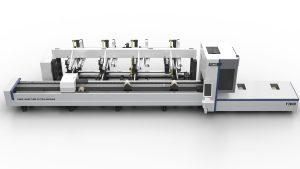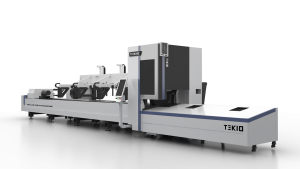Is Fiber Laser Better Than CO2 Laser Cutting Machine?
Laser cutting has become an increasingly popular method for precision cutting in industrial manufacturing, and the technology has advanced significantly in recent years. Two types of lasers are commonly used for cutting: fiber lasers and CO2 lasers. While both are effective at cutting a wide range of materials, each has its own strengths and weaknesses. In this article, we will compare and contrast the four aspects to help you decide whether fiber laser is better than CO2 laser cutting machine.
Cutting Speed
Fiber lasers are known for their high cutting speed, especially when cutting thin materials. The solid-state laser source allows for faster beam modulation, meaning the laser can quickly switch on and off to create intricate patterns and cuts. This makes fiber lasers ideal for high-volume production runs, where speed and efficiency are crucial.
On the other hand, CO2 lasers are typically slower than fiber lasers, particularly when cutting thin materials. The gas laser source takes longer to warm up and cool down, meaning it cannot switch on and off as quickly. However, CO2 lasers excel at cutting thicker materials, where their slower speed allows for a more precise cut.
Cutting Thickness
As mentioned above, CO2 lasers are generally better suited for cutting thicker materials, including wood, plastic, and thicker metal sheets. CO2 lasers have a longer wavelength, which allows them to penetrate deeper into the material, resulting in a smoother cut with less charring and thermal damage.
In contrast, fiber lasers are better suited for cutting thin metal sheets and non-ferrous materials such as aluminum, copper, and brass. The shorter wavelength of fiber lasers means that they can achieve a more precise cut with less heat input, resulting in less thermal distortion and a cleaner edge.
Maintenance
Fiber lasers require less maintenance than CO2 lasers. The solid-state laser source has fewer moving parts and is less susceptible to damage than the gas laser source in CO2 lasers. Fiber lasers also have a longer lifespan and require less frequent replacement of components, such as the laser diode.
CO2 lasers, on the other hand, require more maintenance due to the complexity of the gas laser source. The gas mixture needs to be carefully controlled to ensure optimal performance, and the mirrors and lenses in the optical path require regular cleaning and replacement.
Operating Costs
The operating costs of a laser cutting machine depend on several factors, including energy consumption, maintenance costs, and the cost of consumables such as lenses and mirrors. Overall, fiber lasers have lower operating costs than CO2 lasers. They require less energy to operate, have lower maintenance costs, and have longer lifespans.
CO2 lasers are typically more expensive to operate due to higher energy consumption and maintenance requirements. Consumables such as mirrors and lenses also cost more than fiber lasers.
In summary, the choice between fiber and CO2 lasers for cutting depends on the specific requirements of the application. Fiber lasers are better suited for cutting thin sheet metal and non-ferrous materials, while CO2 lasers are better suited for cutting thicker materials. Fiber lasers have lower maintenance requirements and operating costs, while CO2 lasers provide smoother cuts in thicker materials. Ultimately, the choice will depend on the specific production needs.
Have additional questions? Feel free to contact us for a consultation



